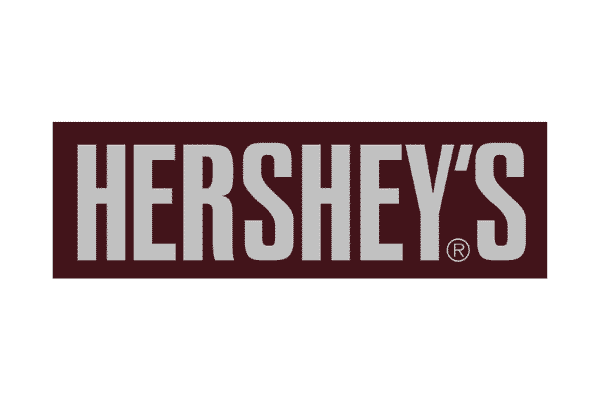History of Branding
Visual marks have been a cornerstone of branding from the onset. The word “brand” comes from Ancient Norse, when cattle owners used torches to mark cattle to show ownership. This served as a logo of sorts and helped to allow an easy way to identify their herd. Over time, branding evolved from showing ownership to separating a product from the competition.
During the Industrial Revolution, mass production meant that items were made quicker and cheaper However, the quality and sourcing became a concern for consumers. Branding was a way to show the origin and quality of a product. This is where brands began to develop distinctions showing company values: liveliness, dependability, luxuriousness, etc. When logos were introduced, it cemented a company’s image and consumers began buying products based on reputation. Branding changed from being a product description to a quality identification.
Another change occurred during the 20th century. After the industrial era, it became routine for businesses to advertise their products in newspapers and magazines. These advertisements focused solely on the product itself, with descriptions and recommendations for how it could be used. As the market got more saturated, however, businesses needed a new way to separate themselves from the competition. This led away from the old approach of product description to a connection with a consumer’s emotion and conscience.
Branding Today
We are consumed by branding today: contrary to the times when consumers only interacted with a company thru print advertisements, viewers see or hear up to 8,000 ads in one day. Consumers may not be as aware of advertising as they once were, which is why it’s difficult, but more important than ever to craft an impactful branding strategy. There are also measures taken by the overwhelmed consumer to avoid the constant barrage of advertisements – ad blockers, channel surfing during commercial breaks, and/or paying for an ad-free account.
Brand
Brand is a perception of your company in the mind of audiences; it’s a concept. It is what people think and feel when they consider your product, your goals, your user experience. Essentially, all of the components that make up your organization.
Branding
As defined by Merriam-Webster, branding is the promoting of a product or service by identifying it with a particular brand. It is the ongoing effort to shape your consumers perception. It is a practice and strategy that includes the steps you take to define your product and company. Branding aims to establish a significant and contrasting presence in the marketplace that attracts and retains loyal customers.
Brand Experience
Brand experience is the impressions, feelings and thoughts evoked by your brand identity. It’s the imaginary space between your branding and your brand.
Brand Equity
Essentially, the commercial value of your brand. It is established based on what customers are willing to pay for your name rather than the product or service itself.
Brand Strategy
The plan that takes into consideration your audience, position in the marketplace and the goals you have established.
Successful branding shapes perceptions. It move the target audience from awareness, to attraction, to preferences and finally to attachment. The final phase is where your audiences form a strong connection with their idea or your organization.
Why does Brand matter?
Brand matters for the big boys because their brands do the selling and consumers are willing to buy based on how they perceive the brand.. Think, Apple, Nike, McDonalds.
Brand doesn’t just work for the large companies, it can work just as much for small and mid-size companies. Notably in this day and age of niche marketing.
- Branding creates trust
- Branding improves recognition
- Branding Supports your Marketing Plan
- Branding Motivates employees
- Branding Generates Revenue
All of these factors work together to build brand equity. With strategic investment in your own branding efforts, your brand will start to work even harder to influence buyers.
Components of Strong Brands
There are a few characteristics that impactful brands have in common. Although there is no precise formula, these components seem to be tried and true.
Authenticity
A word that is spoke a lot in the marketing world. Companies that manage to be true to their brand are able to creat lasting, evolving connections with their consumers. Your customers don’t want empty talk, they what your to do what you say and say what you’ll do.
Most Americans trust small companies versus their larger counterparts, Almost 70% of consumers would give their business to an authentic brand versus a competitor.
Distinctiveness
To stand out and above, you need to separate yourself from your competitors. This goes together with being authentic, but it can also be a way that you can establish a memorable brand. You can’t build your brand equity if your audience doesn’t know or remember who you are.
If you can’t figure out what makes your brand distinctive, ask your repeat customers.
Relevance
Nothing matters if your service or product doesn’t matter to your prospective consumers. Your audience needs to fell like you care about them as people. Furthermore, you need to understand what they want from your product or service. This connection is only possible if you truly understand and communicate your position among your audience.
For your brand to take root, you have to find the commonplace of what your audience needs, how they communicate, and what your product can offer them. Take the time to test your product and your message with a diverse audience before solidifying your strategy.
Consistency
Fearlessness
The only way to create a connection with your audience is to give them something they can relate to. Audiences are expecting brands to take a stance and advocate for what they believe in. It may be tempting to remain neutral, but tentative branding and ill-defined values will get lost in the monotony alongside other companies that don’t know who they are. Be fearless and promote your beliefs.
Your brand is a reflection of your company and it should build trust with potential clients. If you lack clarity or find that your branding efforts don’t fit well anymore, it may be time for a rebrand. Here at hour23design, we have the experience in brand development and can guide you through the process. Contact us if you’d like to learn more or set up an exploratory meeting.





